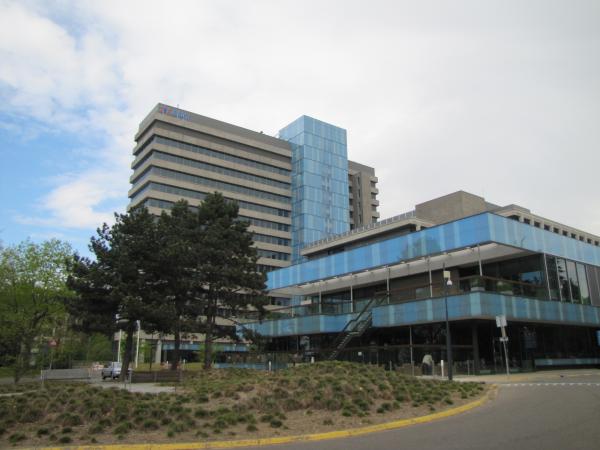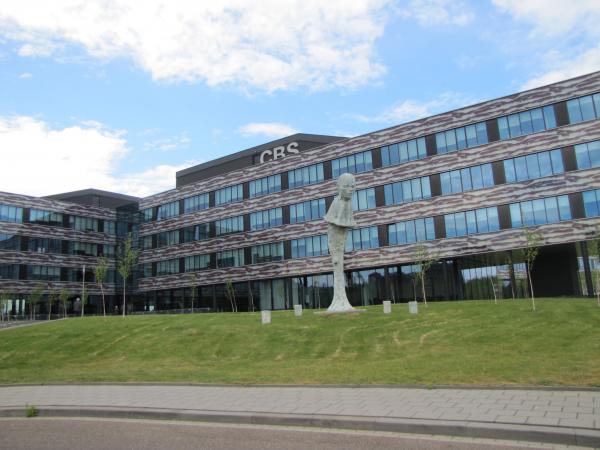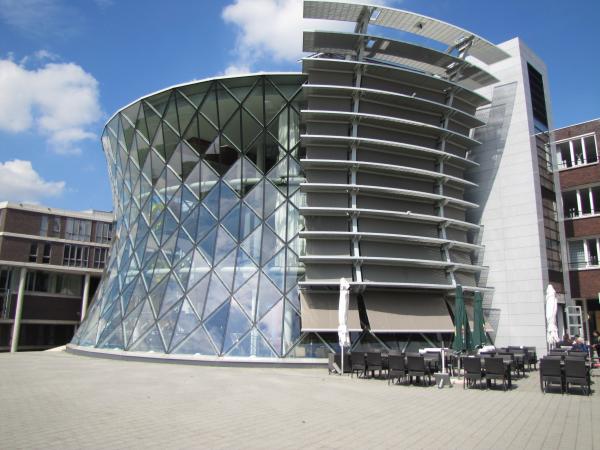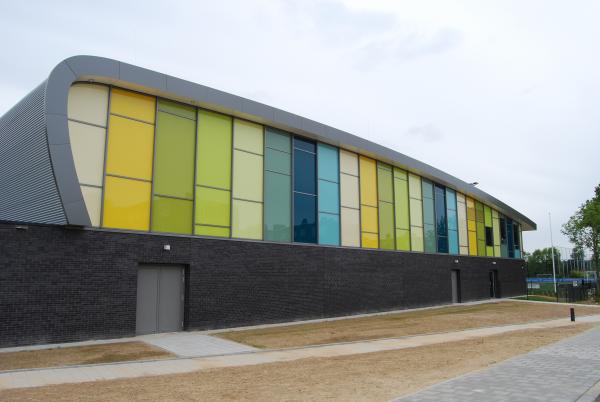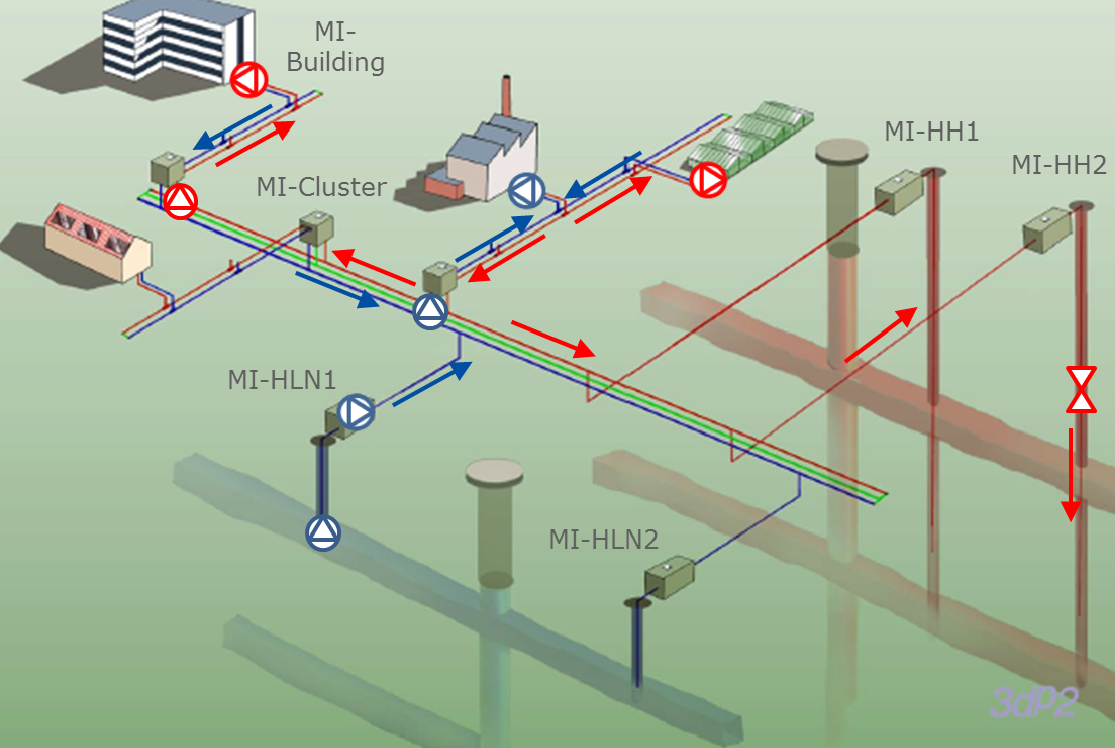 The Heerlen system, operated by Mijnwater BV, consists of two hot wells in the northern part (water with approx. 28°C) and two cold wells in the southern part (approx. 16°C). A fifth well in the middle is used to re-inject the used water with intermediate temperatures between 20-24°C. The backbone of the system is a pipe structure with a length of about 7,800 meters, which connects all wells. It was originally used as the production source, supplying heat and cold for a number of low-energy buildings by means of this backbone network.
The Heerlen system, operated by Mijnwater BV, consists of two hot wells in the northern part (water with approx. 28°C) and two cold wells in the southern part (approx. 16°C). A fifth well in the middle is used to re-inject the used water with intermediate temperatures between 20-24°C. The backbone of the system is a pipe structure with a length of about 7,800 meters, which connects all wells. It was originally used as the production source, supplying heat and cold for a number of low-energy buildings by means of this backbone network.
In 2013, the network has been gradually transformed into an intelligent DHC network, the so-called “Mine Water 2.0” project. All buildings are connected to local cluster networks. The ambition is to make these clusters energy self-sufficient by energy exchange between buildings and energy storage. Since energy is transported over shorter distances, this results in lower distribution losses. Also, energy exchange with the backbone grid that supports the clusters is minimized. This is vital because the capacity of the underground system is limited. In this way, more clusters and thus more buildings can be connected to the backbone mine water system. As a result, expansion of the network becomes possible. However, for fully deploying this system, an automated and smart control system is necessary.
This is where the STORM project comes in.
Latest developments
For the heating season 2016/2017, the Heerlen demo site has been connected to the STORM controller.
1st Phase: Implementation
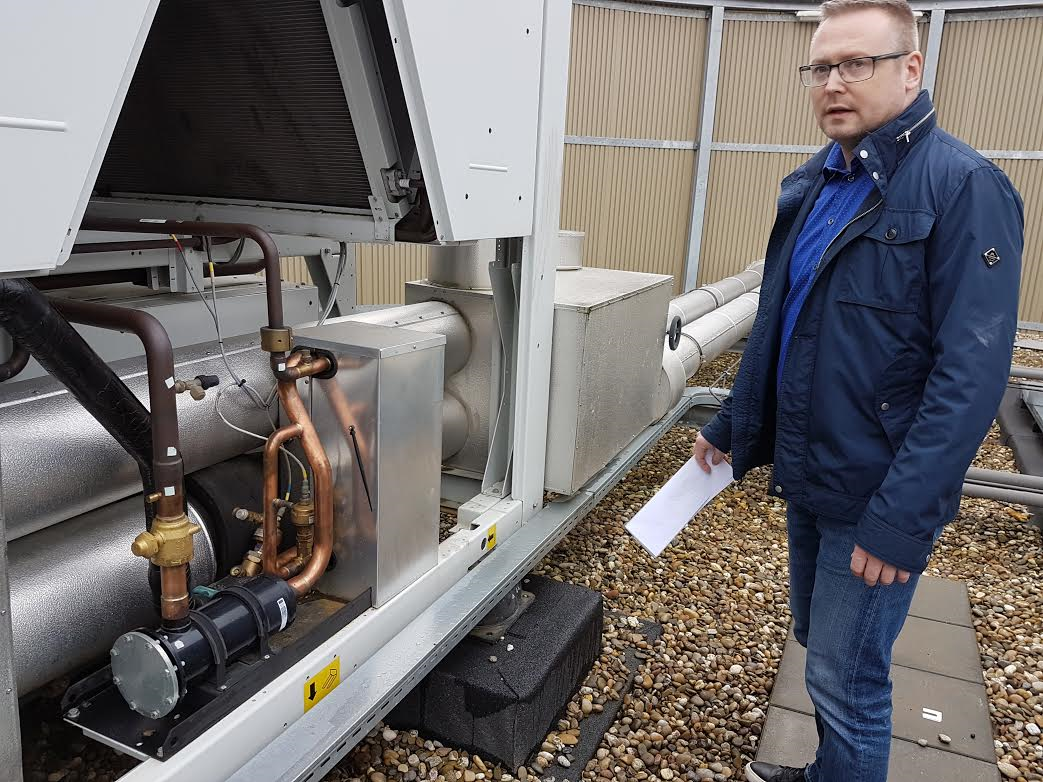 A simulation environment was build for the case of the Mijnwater demo site, based on the one already developed for Rottne. Heerlen is complex, containing heat and cold delivery and energy exchange, possible flow in pipes in two directions, heat pumps in buildings and the integration of storage systems. Hence, the piping model needed to be adapted and the building model adjusted.
A simulation environment was build for the case of the Mijnwater demo site, based on the one already developed for Rottne. Heerlen is complex, containing heat and cold delivery and energy exchange, possible flow in pipes in two directions, heat pumps in buildings and the integration of storage systems. Hence, the piping model needed to be adapted and the building model adjusted.
In the first phase of implementation of the STORM controller, cluster A is connected and tested from heating season 2016-2017 onwards (winter and summer). The most important buildings that are connected to clusternetwork A are APG (office and datacentre), Arcus (school-complex), MAB (multifunctional accommodation) and RABO (office). All customers have their own building management system (BMS). The Mijnwater system is controlled by a PRIVA system through which system data is logged and stored. The greatest challenge is to get both systems to communicate with each other in order to read and write data. In most cases, adjustments to the BMS and needed for which external parties must be enabled through the building owners.
See the slideshow on the bottom of this page for the buildings connected to cluster A of the Heerlen demo site
2nd phase: Verifying results and testing
 From the last cooling season on, business-as-usual-data was gathered and stored to be used as verification for the results of the upcoming testing period of the STORM-controller. In the second phase of development of the STORM controller, the interaction between all clusters (e.g. the whole Mijnwater system) will be monitored and tested.
From the last cooling season on, business-as-usual-data was gathered and stored to be used as verification for the results of the upcoming testing period of the STORM-controller. In the second phase of development of the STORM controller, the interaction between all clusters (e.g. the whole Mijnwater system) will be monitored and tested.
Mijnwater has high expectations of the results that can be achieved by predicting the future energy-need of buildings within the cluster, especially where storage is implemented.
Visit the Mijnwater website to get more insights on the company: www.mijnwater.com

